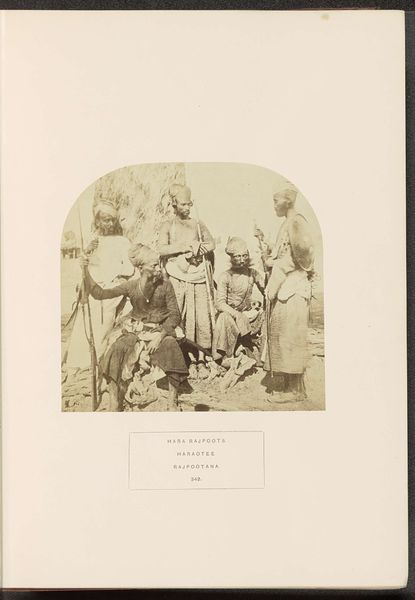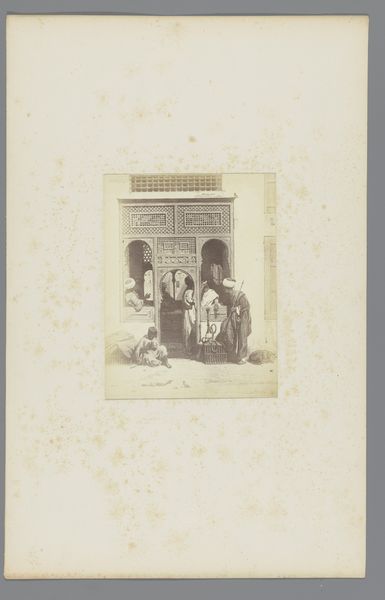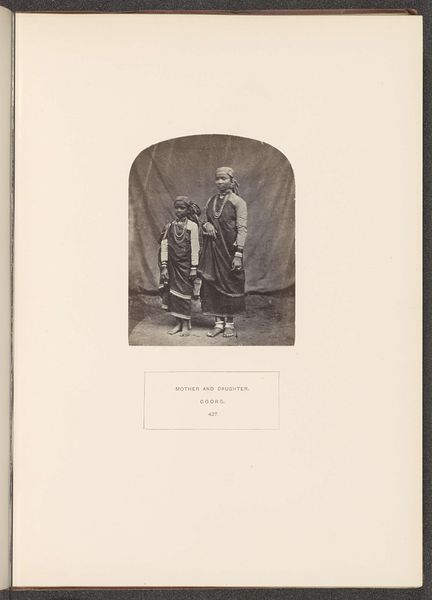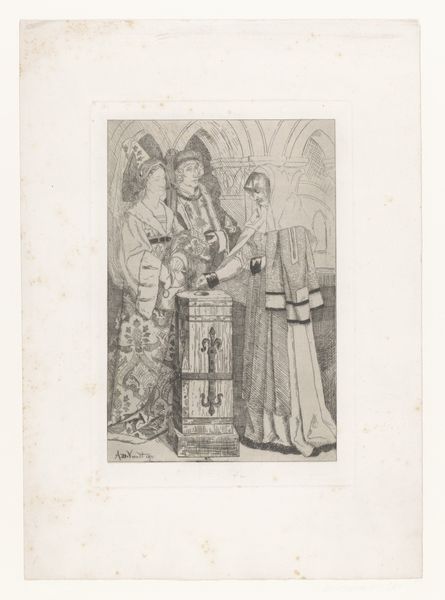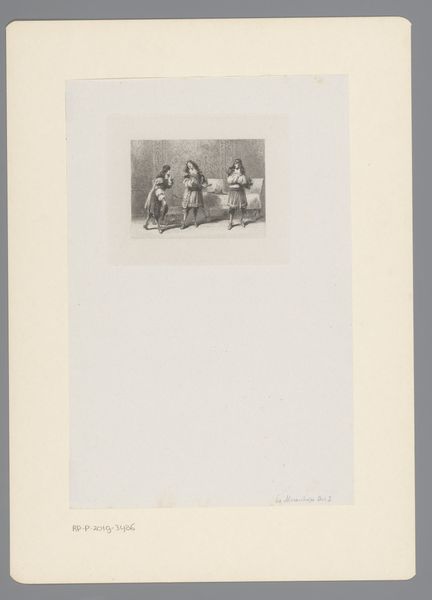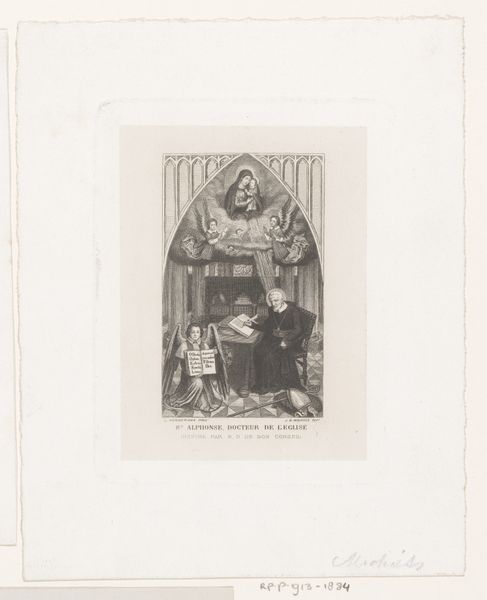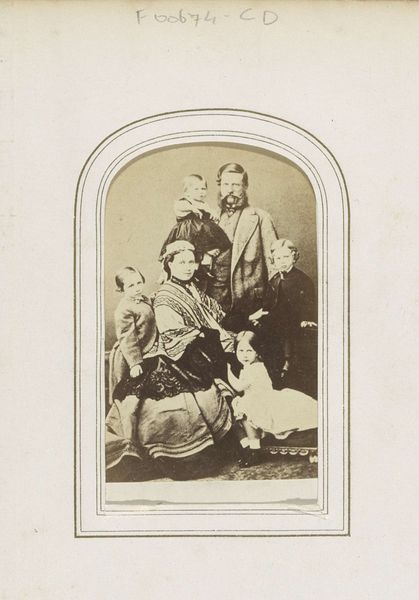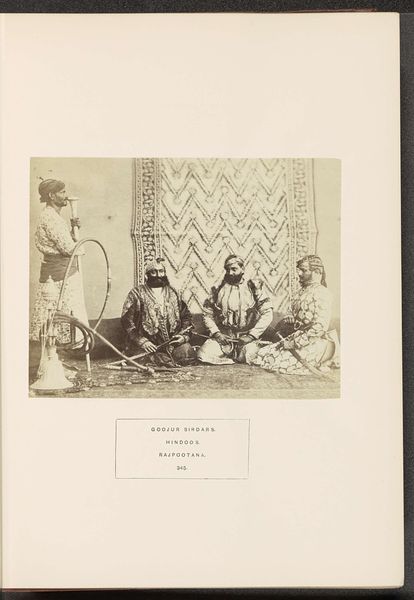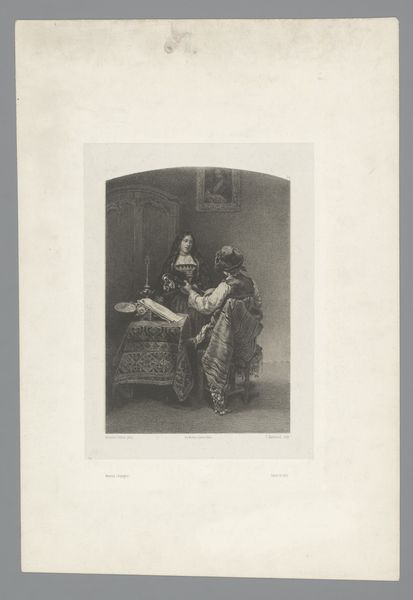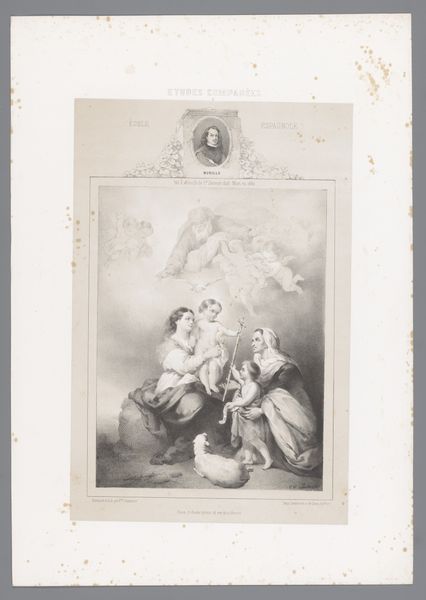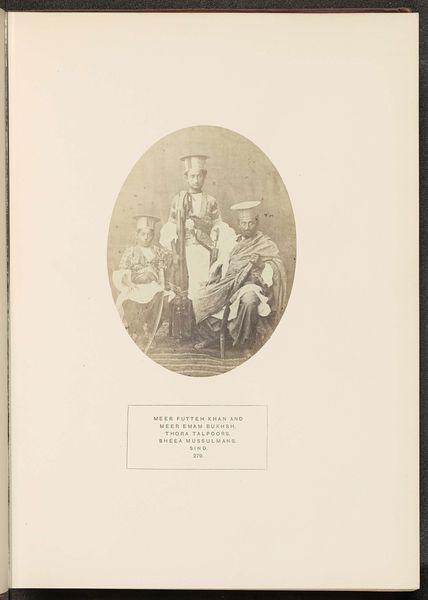
photography, gelatin-silver-print
#
portrait
#
photo of handprinted image
#
african-art
#
16_19th-century
#
indigenism
#
photography
#
historical fashion
#
group-portraits
#
orientalism
#
gelatin-silver-print
#
academic-art
#
realism
Dimensions: height 545 mm, width 367 mm
Copyright: Rijks Museum: Open Domain
Editor: This is Carl Wilhelm Mieling’s gelatin silver print, “Javaanse vorst met twee volgelingen,” created around 1854 to 1856. I’m struck by how the contrast creates a sense of formality and staged presence in the three figures depicted. How do you read the composition of this photograph? Curator: The most immediate formal quality that presents itself is the central figure's dominance. The sharply focused detail draws our eye to the seated man, while the attendants are positioned asymmetrically on either side. Notice also how Mieling utilizes light to create depth. Editor: Yes, the shadows and highlights definitely accentuate the textures of the fabrics and the figures' faces. The framing, however, appears almost deliberately…awkward? Curator: Indeed. The generous negative space surrounding the figures is, from a modern perspective, perhaps visually unsettling, almost destabilizing the implied power dynamic suggested by the subjects. Note the strategic employment of orthogonal lines -- how do these directional cues engage your gaze with the figure? Editor: I see how the edges of the carpet lead my eye to the feet and then up toward the regal figure. So, you're saying that the formal elements, while seemingly simple, work together to direct our interpretation? Curator: Precisely. Consider how the restricted tonal range shapes your interpretation. Do you perceive this work differently knowing its function in documenting culture from a colonial perspective? Editor: Knowing about the artist's background adds another layer, absolutely. Focusing on these formal elements helps understand the impact and potential manipulation within even seemingly objective depictions. Curator: I concur, this image allows for examination of cultural and power narratives embedded within form and structure. Editor: Thank you! I hadn’t considered analyzing this from the perspective of implied hierarchies, but I am definitely looking at the artwork in a fresh way now.
Comments
No comments
Be the first to comment and join the conversation on the ultimate creative platform.
